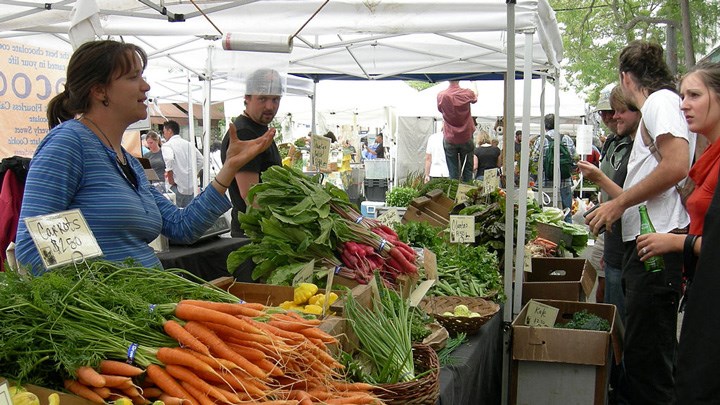
by John Motoviloff, Wisconsin R3 Coordinator, National Wild Turkey Federation - Thursday, August 19, 2021

Two decades ago, it was almost unthinkable for hook-and-bullet organization such as the NWTF to enlist the help of farmers markets and non-hunting land trusts as hunter recruitment tools. In the last several years, however, non-governmental organizations and state agencies across the country are implementing Field to Fork classes with these and other nontraditional partners on a regular basis.
What has happened to prompt this shift? And more importantly, why is this important for the hunting community?
Survival of the Fittest
As with other big questions, history often helps us understand why things happen the way they do. What Charles Darwin discovered in the Galapagos Islands nearly 200 years ago remains as true and relevant today as it was then. Species must adapt in order to survive. The same goes for ideas and institutions.
As hunters make up a progressively smaller percentage of the population in the United States—roughly 10 percent 50 years ago and about 5 percent now—their survival depends more and more on social relevance. The fact that hunting, at its core, is about food, really matters to many people.
“It’s simple,” said Keith Warnke, Fish, Wildlife and Parks Administrator for the Wisconsin Department of Natural Resources. “Hunting as a means of harvesting high-quality local protein is a message that resonates.”
Not only does that message resonate, but it has impressive numbers behind it. Most Americans—75 percent or more—approve of food as a motivation for hunting. The number is considerably lower when hunters are motivated by sport or securing a trophy animal.
This link to food opens the door to a whole new group of hunters: those who are looking to harvest their own protein close to home and in an ethical way, exhibiting the same motivations that have spurred the success of local farmers markets for centuries. The fact hunting dollars fund the lion’s share of wildlife conservation efforts makes hunting a value-added proposition to these newbies.
Field to Fork centers tend to spring up near urban areas with a vibrant food culture and nearby college towns. A short list includes Minneapolis, Iowa City, Madison and Lansing across the Midwest; Burlington, Vt., in New England; Athens, Columbia and Austin in the South; and Portland and many locations in California in the West.
“Working with food co-ops on Field to Fork events is critical for reaching a broader audience,” said Matthew DiBona, NWTF regional biologist for New England. “NWTF worked with Vermont Fish and Wildlife and Rooted in Vermont to host a Field to Fork event in 2019 at the Onion River Co-op in Burlington. Using its [the co-op’s] storefront as the physical location for the event not only gave us fantastic facilities to prepare the dishes, but it also helped raise awareness of wild game as a food source amongst a demographic that might not be otherwise be connected to hunting.”
Back to the Land
Field to Fork classes, like any hunting class, require quality habitats where first-time hunters can take to the woods in the company of experienced mentors and try their hand. Interestingly, NWTF’s long history of working with land trusts such as the Nature Conservancy on habitat restoration provides another opportunity for reaching this new group of hunters. Properties belonging to these trusted “brands” often receive little or no hunting pressure.
Reducing deer populations can also help land management and biodiversity goals, as well as providing a happy jumping-off point for new hunters.
While the Nature Conservancy is one of the larger non-consumptive organizations with which the NWTF partners, it is hardly the only one. Pierce Cedar Creek Institute, the Aldo Leopold Foundation and Mississippi Valley Conservancy are a few others.
What’s Old Is New Again
It’s heartening to see that, going forward, securing food and helping to manage land are two ideas that resonate with new hunters and the general public. Just as wildlife must explore new habitats to survive, it’s essential for the hunting community to continually adapt and expand its reach.
Interestingly, it could also be argued that food and wildlife conservation are also two of the oldest reasons for hunting. It’s no coincidence, then, that they are also core NWTF values.
About the Voice of Leadership Panel
Facilitated by James “Jay” Pinsky, editor of The Hunting Wire, and Peter Churchbourne, a director with the NRA HLF, the Voice of Leadership Panel (VLP) is a six-member group of outdoor industry leaders dedicated to sharing their voices on key hunting and outdoor recreation issues to inform and educate the hunting community. Appointed for a one-year term, VLP panelists address key hunting topics and provide leadership-based digital content to be featured on The Hunting Wire and the NRA Hunters’ Leadership Forum website, NRAHLF.org.
E-mail your comments/questions about this site to:
[email protected]
